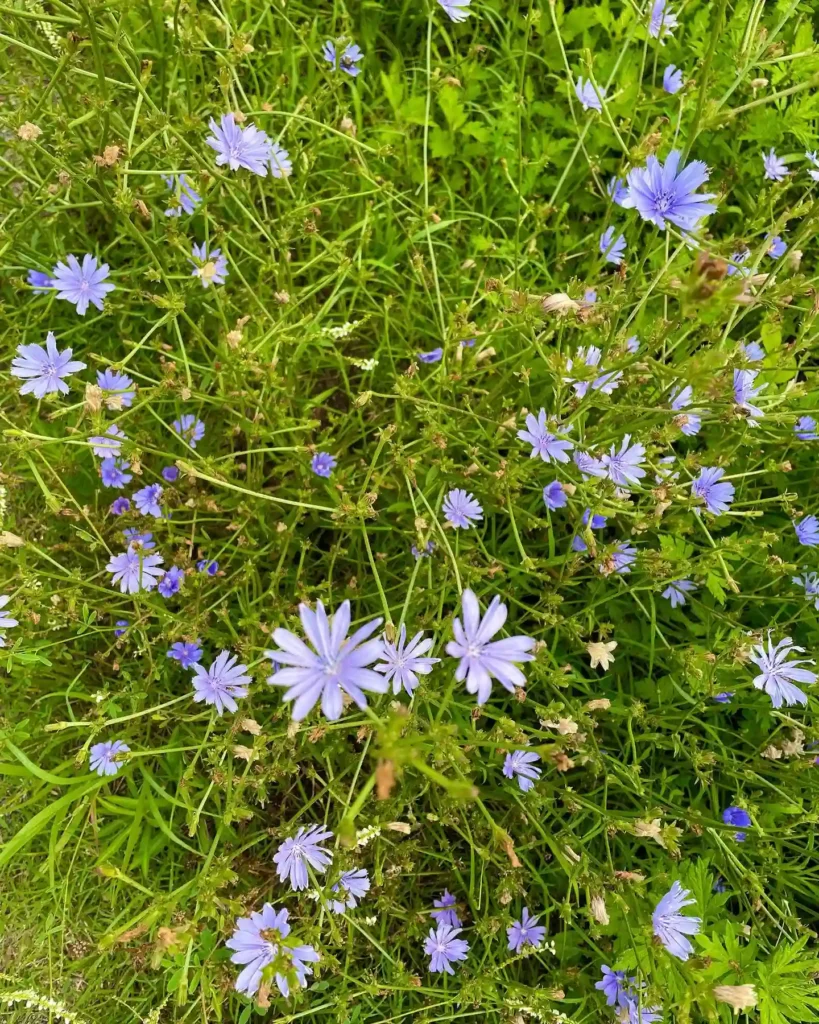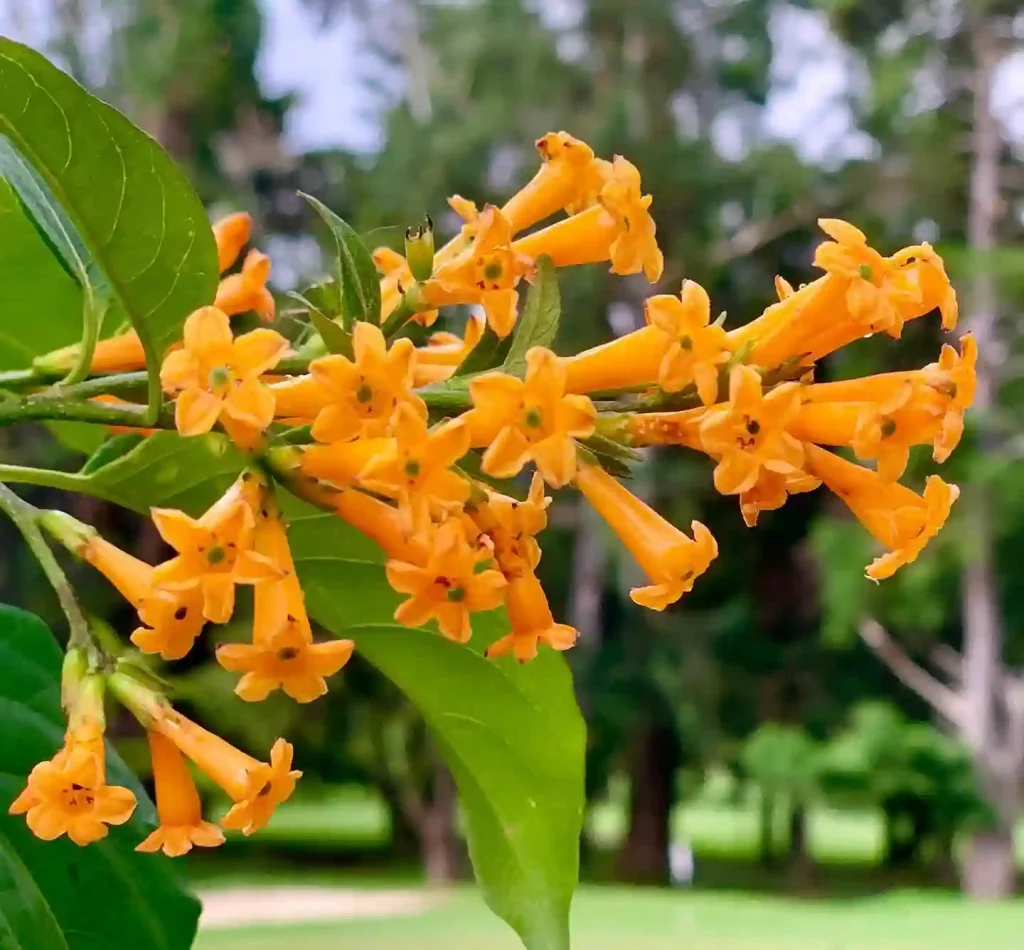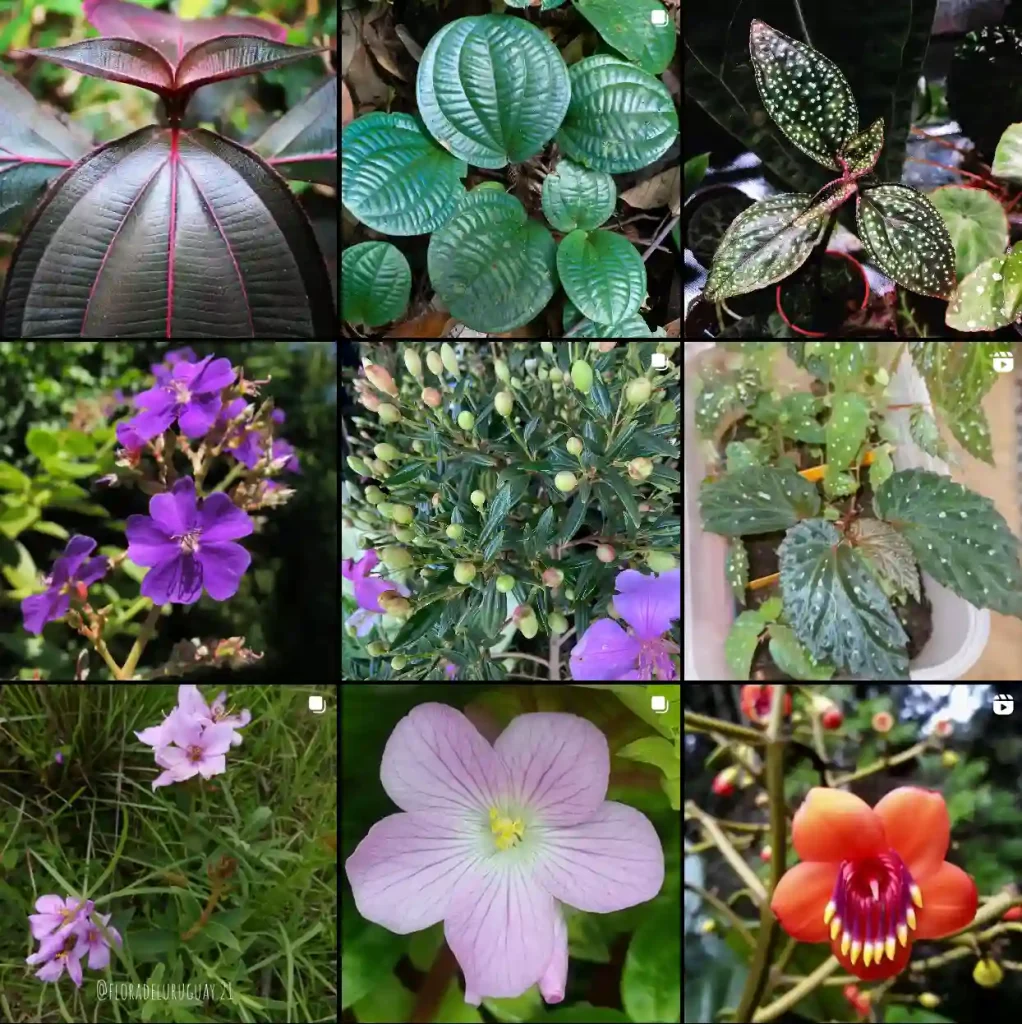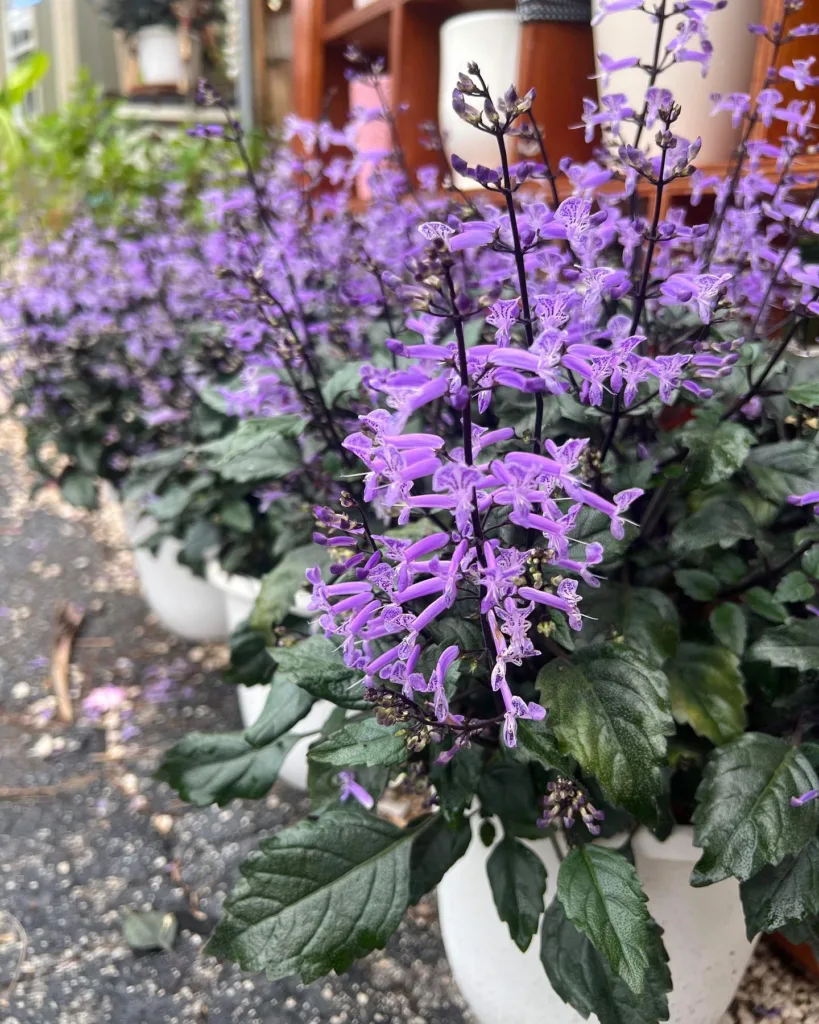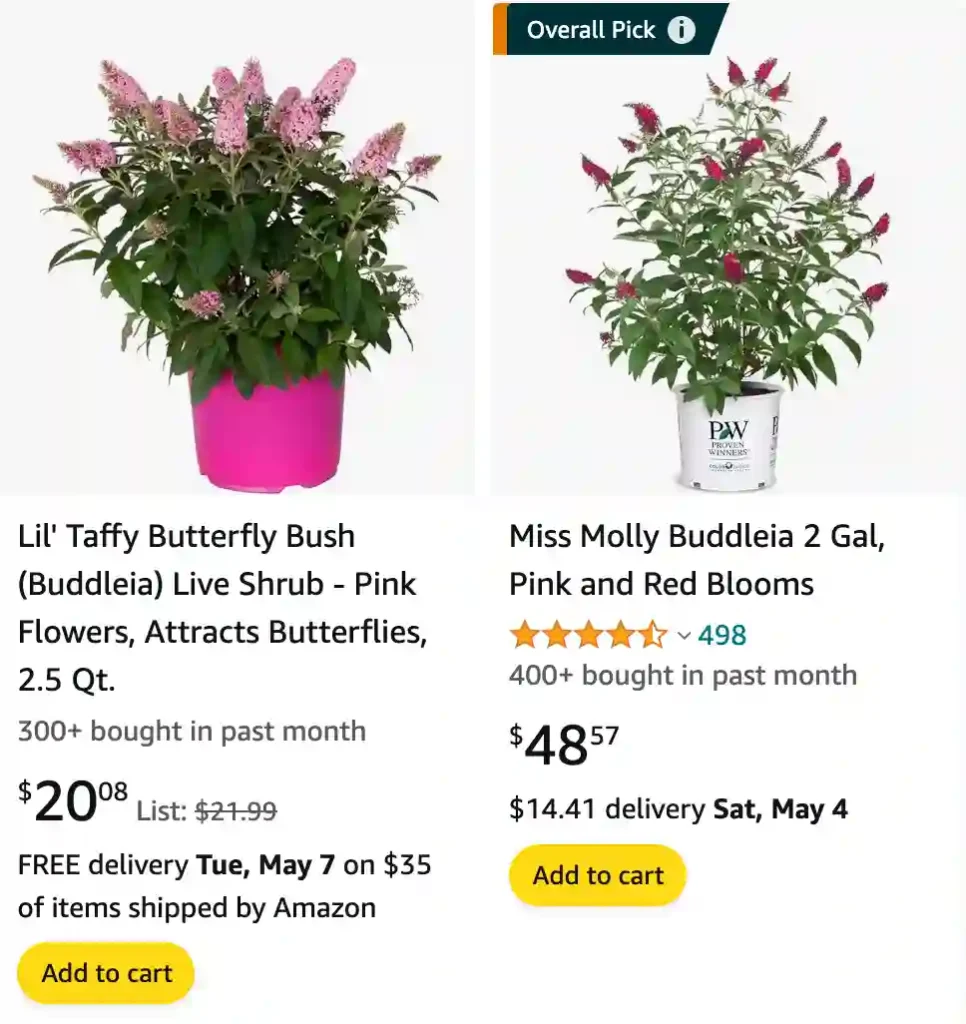
Buddleja: A Butterfly’s Best Friend
Hi, I’m Ferb Vu, and I’ve got a confession: I’m a Buddleja enthusiast. You might know them better as butterfly bushes, and for good reason. These flowering shrubs are like magnets for butterflies, bees, and even the occasional hummingbird. But my fascination with Buddleja goes beyond their ability to attract pollinators. I’m captivated by their diversity, their hardiness, and their sheer beauty.
A World of Buddleja
The Buddleja genus belong to the Scrophulariaceae family, boasts over 100 species, hailing from Asia, Africa, and the Americas. This incredible variety means there’s a Buddleja for almost any garden, from compact dwarfs to towering giants. Here are:
- Buddleja acuminata Poir.
- Buddleja × alata Rehder & E.H.Wilson
- Buddleja albiflora Hemsl.
- Buddleja alternifolia Maxim.
- Buddleja americana L.
- Buddleja anchoensis Kuntze
- Buddleja angusticarpa (E.M.Norman & L.B.Sm.) G.P.Coelho & Miotto
- Buddleja araucana Phil.
- Buddleja aromatica J.Rémy
- Buddleja asiatica Lour.
- Buddleja auriculata Benth.
- Buddleja axillaris Willd. ex Roem. & Schult.
- Buddleja bhutanica T.Yamaz.
- Buddleja blattaria J.F.Macbr.
- Buddleja bordignonii G.P.Coelho & Miotto
- Buddleja brachiata Cham. & Schltdl.
- Buddleja brachystachya Diels
- Buddleja bullata Kunth
- Buddleja candida Dunn
- Buddleja cardenasii Standl. ex E.M.Norman
- Buddleja caryopteridifolia W.W.Sm.
- Buddleja cestriflora Cham.
- Buddleja chapalana B.L.Rob.
- Buddleja chenopodiifolia Kraenzl.
- Buddleja colvilei Hook.f.
- Buddleja cordata Kunth
- Buddleja cordobensis Griseb.
- Buddleja coriacea J.Rémy
- Buddleja corrugata M.E.Jones
- Buddleja crispa Benth.
- Buddleja crotonoides A.Gray
- Buddleja cuneata Cham.
- Buddleja curviflora Hook. & Arn.
- Buddleja cuspidata Baker
- Buddleja davidii Franch. Plant FAQs: Buddleja Davidii Black Knight – Plant FAQs: Buddleja Davidii Monum Nanho Purple
- Buddleja delavayi L.F.Gagnep.
- Buddleja diffusa Ruiz & Pav.
- Buddleja domingensis Urb.
- Buddleja dysophylla (Benth.) Radlk.
- Buddleja elegans Cham. & Schltdl.
- Buddleja euryphylla Standl. & Steyerm.
- Buddleja fallowiana Balf.f. & W.W.Sm.
- Buddleja filibracteolata J.A.González & J.F.Morales
- Buddleja forrestii Diels
- Buddleja fragifera Leeuwenb.
- Buddleja fusca Baker
- Buddleja globosa Hope Plant FAQs: Buddleja Globosa
- Buddleja glomerata H.L.Wendl.
- Buddleja grandiflora Cham. & Schltdl.
- Buddleja × griffithii (C.B.Clarke) C.Marquand
- Buddleja hatschbachii E.M.Norman & L.B.Sm.
- Buddleja hieronymi R.E.Fr.
- Buddleja hypsophila I.M.Johnst.
- Buddleja ibarrensis E.M.Norman
- Buddleja incana Ruiz & Pav.
- Buddleja indica Lam.
- Buddleja interrupta Kunth
- Buddleja iresinoides (Griseb.) Hosseus
- Buddleja jamesonii Benth.
- Buddleja japonica Hemsl.
- Buddleja jinsixiaensis R.B.Zhu
- Buddleja kleinii E.M.Norman & L.B.Sm.
- Buddleja lanata Benth.
- Buddleja lindleyana Fortune
- Buddleja lojensis E.M.Norman
- Buddleja longiflora Brade
- Buddleja longifolia Kunth
- Buddleja loricata Leeuwenb.
- Buddleja macrostachya Benth.
- Buddleja madagascariensis Lam.
- Buddleja marrubiifolia Benth.
- Buddleja megalocephala Donn.Sm.
- Buddleja mendozensis Gillies ex Benth.
- Buddleja microstachya E.D.Liu & H.Peng
- Buddleja misionum Kraenzl.
- Buddleja montana Britton
- Buddleja multiceps Kraenzl.
- Buddleja myriantha Diels
- Buddleja nitida Benth.
- Buddleja nivea Duthie
- Buddleja normaniae J.H.Chau
- Buddleja oblonga Benth.
- Buddleja officinalis Maxim.
- Buddleja paniculata Wall.
- Buddleja parviflora Kunth
- Buddleja perfoliata Kunth
- Buddleja pichinchensis Kunth
- Buddleja polycephala Kunth
- Buddleja polystachya Fresen.
- Buddleja pulchella N.E.Br.
- Buddleja racemosa Torr.
- Buddleja ramboi L.B.Sm.
- Buddleja rinconensis (Mayfield) J.H.Chau
- Buddleja rufescens Willd.
- Buddleja saligna Willd.
- Buddleja salviifolia (L.) Lam.
- Buddleja scordioides Kunth
- Buddleja sessiliflora Kunth
- Buddleja simplex Kraenzl.
- Buddleja skutchii C.V.Morton
- Buddleja soratae Kraenzl.
- Buddleja speciosissima Taub.
- Buddleja sphaerocalyx Baker
- Buddleja stachyoides Cham. & Schltdl.
- Buddleja suaveolens Kunth & C.D.Bouché
- Buddleja subcapitata E.D.Liu & H.Peng
- Buddleja thyrsoides Lam.
- Buddleja tsetangensis C.Marquand
- Buddleja tubiflora Benth.
- Buddleja tucumanensis Griseb.
- Buddleja utahensis Coville
- Buddleja vexans Kraenzl. & Loes. ex E.M.Norman
- Buddleja × wardii C.Marquand
- Buddleja yunnanensis L.F.Gagnep.
FAQs
What do butterfly bush seeds look like?
Those butterfly bush seeds are tiny! Like, dust-of-a-butterfly wing tiny. I remember the first time I tried collecting them from my own bush. The seed pods look kind of like long, skinny cones, but when you break them open, it just explodes into this cloud of what seems like nothing. I tried squinting and separating seeds, but it was pointless. In the end, I just scooped up a bunch of the pod bits and sprinkled them in a pot with some soil – hoping for the best! And guess what? I actually got a few little sprouts that turned into healthy butterfly bushes. So, next time, I’m not even going to bother with trying to see the individual seeds. Tiny dust it is!
Where to buy butterfly bush?
There are actually a couple of great ways to get butterfly bushes, depending on your patience and gardening style. The easiest option is definitely buying a young plant from a nursery or garden center. Last year, I found a fantastic selection at Amazon. They had all sorts of varieties in different colors, and the staff was super helpful in picking one that would thrive in my sunlight conditions. Plus, with a young plant, you get the gratification of watching it grow into a gorgeous bush that attracts butterflies all summer long.
How to propagate a butterfly bush?
While I haven’t had much luck myself with butterfly bush seeds (way too tiny!), propagating them from cuttings is surprisingly easy and rewarding. This past summer, I decided to give it a go – free butterflies, anyone? I found a healthy stem on my bush with new growth, snipped off a 4-inch piece just below a leaf node, and dipped the end in some rooting hormone (though I hear some people skip this step). Then, I popped it into a pot filled with a mix of potting soil and perlite for extra drainage. The key is keeping the soil moist but not soggy, and I found using a clear plastic bag to create a mini greenhouse on top really helped. It took a few weeks, but seeing those tiny roots emerge was pretty exciting! Now, I have a happy little butterfly bush growing on my windowsill, ready to be planted outside come spring. So yeah, propagating from cuttings is the way to go for butterfly bushes – easy and fun!
How to deadhead butterfly bush?
Deadheading my butterfly bush has become a relaxing ritual every summer. I usually grab a cool drink and my favorite gardening gloves, because those butterfly bush stems can be surprisingly prickly! The trickiest part for me is finding the right balance between removing the dead flower head and not accidentally snipping off new buds. I’ve gotten better at spotting the spent blooms – they tend to droop a bit and the color dulls. Once I find one, I follow the stem down to just above a healthy set of leaves and make a clean cut with my hand pruners. It’s amazing how quickly new flowers appear after a deadheading session, and my butterfly bush always seems to reward my efforts with even more blooms throughout the season.
Do deer eat butterfly bush?
Yes, I’ve noticed that deer do indeed have a taste for butterfly bushes. It was quite a disappointment for me because I had planted a row of beautiful butterfly bushes along the edge of my garden, hoping to attract some colorful visitors. But to my dismay, I found that the deer had been nibbling away at the leaves and even the flowers. It was disheartening to see my carefully tended plants being eaten, but I’ve since learned to protect them with fencing or deer repellents to keep those hungry visitors at bay.
When to transplant a butterfly bush?
In my experience, the best time to transplant a butterfly bush is in the early spring or late fall when the plant is dormant. I remember transplanting a butterfly bush from one corner of my garden to another in early spring a couple of years ago. The cool temperatures and moist soil helped the plant establish its roots in its new location without the stress of hot summer weather. Plus, transplanting during these times minimizes the shock to the plant, giving it the best chance to thrive in its new spot. Just be sure to water it well after transplanting and keep an eye on it as it adjusts to its new home.
Is butterfly bush toxic to dogs?
Yes, butterfly bushes can be toxic to dogs if ingested in large quantities. I learned this the hard way when my curious pup decided to nibble on some leaves from a butterfly bush in our backyard. While small amounts might not cause serious harm, consuming large quantities of the leaves or flowers can lead to gastrointestinal upset, including symptoms like vomiting, diarrhea, and abdominal pain in dogs. It was a worrisome experience for me, and I quickly learned to keep a close eye on my furry friend whenever he’s out in the yard to prevent any further incidents.
What to plant instead of butterfly bush?
When I was considering alternatives to butterfly bushes, I found several options that were just as attractive to butterflies and other pollinators. One of my favorites is the lavender plant. Not only does it produce beautiful purple flowers that butterflies love, but it also fills the air with a delightful fragrance. Another great option is the purple coneflower, which not only attracts butterflies but also adds a pop of color to the garden with its vibrant blooms. Additionally, I found that planting milkweed is beneficial for both monarch butterflies and other pollinators, making it a valuable addition to any garden aiming to support local wildlife. Overall, I’ve found these alternatives to be just as rewarding as butterfly bushes in attracting butterflies and creating a vibrant garden space.
Does butterfly bush attract bees?
Yes, butterfly bushes are known to attract bees along with butterflies. I’ve observed this firsthand in my garden, where the fragrant flowers of the butterfly bush act as a magnet for various pollinators, including bees. It’s fascinating to watch as the bees buzz around the blooms, collecting nectar and pollen to bring back to their hives. While some people might be wary of bees, I’ve come to appreciate their presence in my garden as essential pollinators that help ensure the health and abundance of my plants.
How to propagate butterfly bush in water?
Propagating butterfly bushes in water can be a fun and rewarding way to create new plants. Here’s how I’ve done it: First, I select healthy stems from the butterfly bush, making sure they have several nodes where leaves emerge. Then, I cut the stems at a 45-degree angle just below a node using sharp, clean scissors or pruning shears. Next, I remove the lower leaves from the stem, leaving only a few at the top. After that, I place the stems in a container filled with clean water, making sure the nodes are submerged. I change the water every few days to keep it fresh and prevent algae growth. Over time, I’ve noticed roots starting to form from the nodes of the stems. Once the roots are a few inches long, I transplant the cuttings into pots filled with well-draining soil and continue to care for them as I would any other young plant. It’s a simple and effective method that has allowed me to propagate butterfly bushes with success.
How to root a butterfly bush?
Rooting a butterfly bush can be done through several methods, but one common technique involves rooting stem cuttings in a suitable rooting medium. Here’s how I’ve successfully rooted butterfly bushes:
Selecting and Preparing Cuttings: Choose healthy, non-flowering stems from the butterfly bush. Cut 4-6 inch long sections of the stem, ensuring each cutting has at least 2-3 leaf nodes. Trim the bottom of the cutting just below a node at a 45-degree angle.
Removing Leaves: Remove the leaves from the lower half of the cutting to expose the nodes where roots will form. This helps reduce moisture loss and prevents rotting.
Applying Rooting Hormone (Optional): Dip the cut end of each cutting into a rooting hormone powder or gel. While this step is optional, it can promote faster and more reliable root growth.
Preparing the Rooting Medium: Use a well-draining rooting medium such as perlite, vermiculite, or a mix of peat moss and sand. Moisten the medium slightly to provide adequate moisture for root development.
Inserting Cuttings: Make a hole in the rooting medium using a pencil or similar tool. Insert the prepared cuttings into the holes, ensuring that at least one node is buried in the medium. Space the cuttings several inches apart to prevent crowding.
Providing Ideal Conditions: Place the container with the cuttings in a warm, brightly lit location, but avoid direct sunlight which can cause excessive drying. Maintain a consistent level of moisture in the rooting medium by misting it regularly or covering the container with a plastic dome to retain humidity.
Monitoring and Care: Check the cuttings regularly for signs of root development, which typically takes several weeks. Once roots have formed and the cuttings have established themselves, they can be transplanted into individual pots or directly into the garden.
By following these steps and providing proper care, you can successfully root butterfly bush cuttings and propagate new plants to enjoy in your garden.
Can butterfly bush grow in shade?
While butterfly bushes prefer full sun and thrive in bright, sunny locations, they can tolerate some shade. However, their growth and flowering may be compromised in shady conditions. In my experience, I’ve found that butterfly bushes planted in partial shade tend to produce fewer blooms and have a more leggy, less compact growth habit compared to those planted in full sun. If you must plant a butterfly bush in a shaded area, choose a spot that receives at least a few hours of direct sunlight each day to help promote better growth and flowering. Additionally, be sure to provide adequate air circulation and avoid overly damp or poorly drained soil, as these conditions can increase the risk of disease.
How do you winterize a butterfly bush?
Winterizing a butterfly bush is essential in colder climates to help it survive harsh winter conditions. Here’s how I prepare my butterfly bushes for winter:
Pruning: In late fall, after the butterfly bush has finished flowering, I prune it back to about 12-18 inches above ground level. This helps reduce the overall size of the plant and prevents it from becoming damaged by heavy snow or ice buildup during the winter months.
Mulching: After pruning, I apply a layer of organic mulch, such as shredded leaves or straw, around the base of the butterfly bush. This helps insulate the soil, retain moisture, and protect the roots from freezing temperatures.
Wrapping: For added protection, especially in colder regions, I sometimes wrap the base of the butterfly bush with burlap or other breathable fabric. This helps shield the plant from harsh winds and prevents the soil from freezing too deeply around the roots.
Removing Debris: Before the first frost, I make sure to remove any fallen leaves, branches, or other debris from around the base of the butterfly bush. This helps prevent the buildup of moisture, which can lead to fungal diseases during the winter months.
Monitoring: Throughout the winter, I keep an eye on the butterfly bush, especially during thaws or periods of mild weather. If there’s any heavy snow accumulation, I gently brush it off the branches to prevent them from bending or breaking under the weight.
By taking these steps to winterize my butterfly bushes, I’ve been able to protect them from cold temperatures and ensure they come back healthy and strong in the spring.
What is eating my butterfly bush?
If you notice something eating your butterfly bush, it could be caused by various pests or animals. One common culprit is caterpillars, particularly those of the butterfly bush’s namesake, the butterfly. While it might seem counterintuitive, these caterpillars can munch on the leaves of the butterfly bush as they grow and develop. Additionally, other insects like aphids or beetles may also feed on the leaves or flowers, causing damage to the plant. In some cases, larger animals such as deer or rabbits may browse on the foliage of the butterfly bush, especially if other food sources are scarce. Identifying the specific pest or animal responsible for the damage can help you determine the best course of action to protect your butterfly bush.
Why is my butterfly bush turning yellow?
If your butterfly bush is turning yellow, it could be a sign of various issues that need attention. One common cause is overwatering, which can lead to root rot and poor nutrient uptake, resulting in yellowing leaves. Conversely, underwatering can also cause stress to the plant, leading to yellowing and wilting of the foliage. Additionally, nutrient deficiencies, particularly nitrogen, can manifest as yellowing leaves. Insufficient sunlight, such as planting the butterfly bush in too much shade, can also cause yellowing of the leaves as the plant struggles to photosynthesize effectively. Pests, diseases, or environmental stressors like extreme temperatures or poor soil drainage can also contribute to yellowing foliage. To address the issue, consider factors such as watering practices, sunlight exposure, soil quality, and potential pest or disease problems, and adjust accordingly to help your butterfly bush regain its health and vibrancy.
Can butterfly bush grow in a pot?
Yes, butterfly bushes can indeed grow in pots, but there are some considerations to keep in mind to ensure their success. When growing a butterfly bush in a pot, it’s essential to choose a large container with adequate drainage holes to prevent waterlogging, as butterfly bushes prefer well-draining soil. Use a high-quality potting mix designed for container gardening, and consider adding some compost or slow-release fertilizer to provide nutrients to the plant.
Additionally, place the potted butterfly bush in a sunny location where it can receive at least 6-8 hours of direct sunlight each day to promote healthy growth and flowering. Regular watering is crucial, especially during hot weather, to keep the soil consistently moist but not waterlogged.
Prune the butterfly bush regularly to maintain its size and shape, as container-grown plants may become root-bound more quickly than those planted in the ground. Repotting may be necessary every couple of years to refresh the soil and provide more space for root growth.
With proper care and attention to its growing conditions, a butterfly bush can thrive and beautify your patio, balcony, or garden space when grown in a pot.
Does butterfly bush attract hummingbirds?
While butterfly bushes are primarily known for attracting butterflies with their colorful blooms and sweet fragrance, they can also attract hummingbirds. In my experience, I’ve occasionally observed hummingbirds visiting the butterfly bushes in my garden, especially when the flowers are abundant and in full bloom. While hummingbirds are more commonly associated with tubular flowers, they may still be drawn to butterfly bushes for their nectar, particularly during periods when other nectar sources are scarce. Providing a diverse range of flowering plants in your garden can help attract and support a variety of pollinators, including both butterflies and hummingbirds.
Buddleja in My Garden
In my own garden, I’ve cultivated a small collection of Buddlejas. I have a ‘Black Knight’ Buddleja davidii with its deep purple flowers, a ‘Sungold’ with its vibrant yellow blooms, and a ‘Pink Delight’ with its soft pink flower spikes. I’ve also planted a Buddleja alternifolia, which I’ve trained to climb a trellis, creating a fragrant waterfall of flowers.
I’ve found that Buddlejas are easy to propagate from cuttings, so I’ve been able to share my love for these plants with friends and family. It’s always a pleasure to see a cutting I’ve given thrive in someone else’s garden.
A Note on Invasiveness
It’s important to acknowledge that some Buddleja species, particularly Buddleja davidii, can be invasive in certain regions. Their seeds spread easily, and they can quickly colonize disturbed areas. If you live in an area where Buddleja is considered invasive, it’s crucial to choose sterile cultivars or take steps to prevent seed dispersal. Deadheading spent flowers is a simple but effective way to reduce self-seeding.
The Enduring Appeal of Buddleja
Despite the concerns about invasiveness, I believe Buddlejas have a valuable place in our gardens. Their beauty, hardiness, and ability to attract wildlife make them a worthwhile addition to any landscape. With careful selection and responsible gardening practices, we can enjoy these wonderful plants while minimizing their environmental impact.
For me, Buddlejas represent the joy of gardening. They’re a reminder that even with minimal effort, we can create a space that is both beautiful and beneficial to the natural world. So, if you’re looking for a plant that’s easy to grow, attracts wildlife, and adds a touch of magic to your garden, look no further than Buddleja. You won’t be disappointed.
If i die, water my plants!
